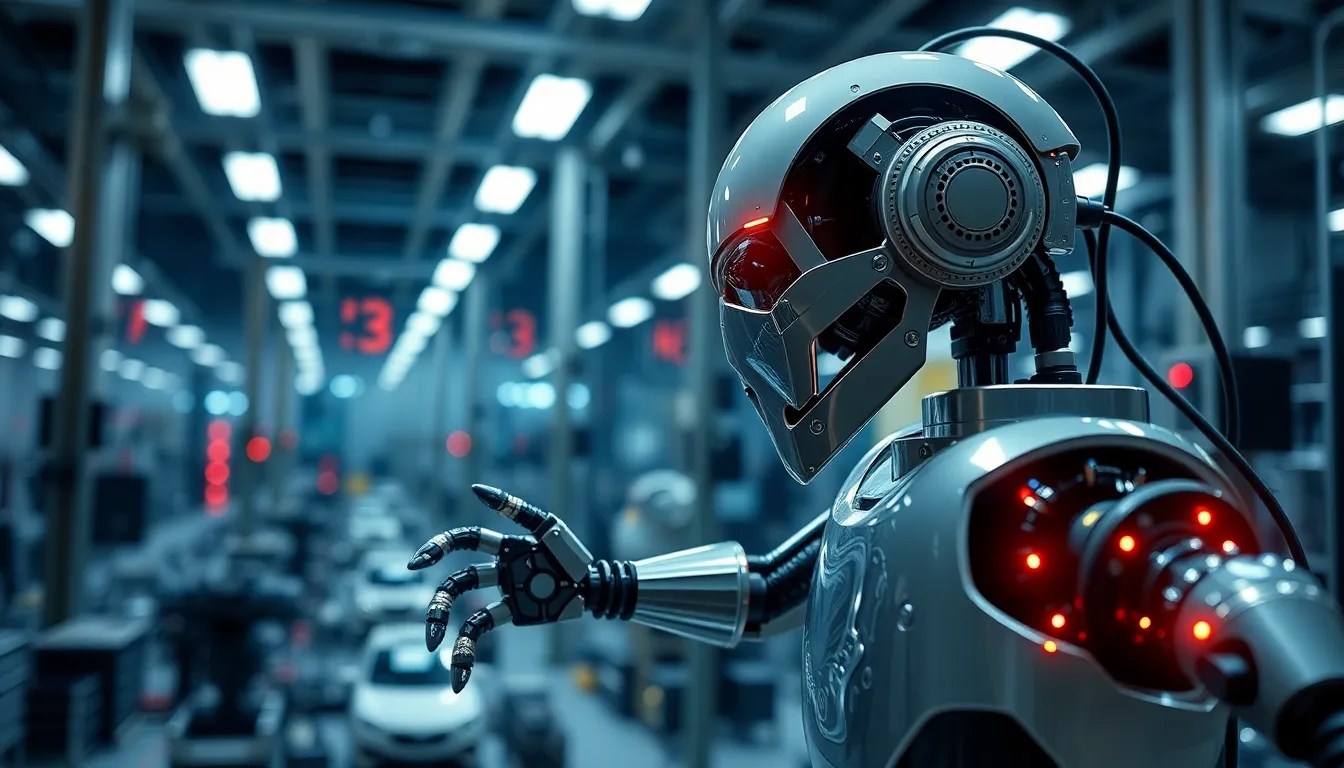The Role of Robotics in Enhancing Product Development Processes
I. Introduction
Robotics in product development refers to the use of robotic systems to enhance various stages of product design, manufacturing, and testing. With the rapid pace of technological evolution, robotics has become integral to modern product development processes. The importance of these processes cannot be understated, as they determine the speed, quality, and efficiency with which new products reach the market.
This article aims to explore how robotics enhances product development processes, examining historical contexts, current trends, benefits, challenges, future prospects, and real-world case studies that illustrate successful implementations of robotic technologies.
II. Historical Context of Robotics in Product Development
The journey of robotics in manufacturing began in the early 20th century, with the introduction of mechanized tools and machines. However, it wasn’t until the late 1950s and early 1960s that the first industrial robots were developed, marking a significant milestone in robotic technology.
Key milestones include:
- 1956: The introduction of the first industrial robot, Unimate, used in General Motors’ production line.
- 1980s: The advent of programmable robots, allowing for increased versatility in manufacturing.
- 1990s: The integration of sensors and artificial intelligence into robotic systems.
Over the decades, the transition from traditional manufacturing methods to robotic integration has transformed product development, making it more efficient and precise.
III. Current Trends in Robotics for Product Development
Today, several types of robotics are utilized in product development, including:
- Collaborative Robots (Cobots): Designed to work alongside human workers, enhancing productivity without replacing jobs.
- Autonomous Robots: Capable of performing tasks independently, often used in logistics and assembly lines.
Recent advancements in robotic technology, particularly in the realm of artificial intelligence and machine learning, have further propelled their capabilities. Robots can now learn from their environment, adapt to new tasks, and even optimize their own performance.
Industries leading the charge in robotic adoption include:
- Automotive: Robotics streamline manufacturing processes, from assembly to quality assurance.
- Electronics: Precision robots are used for intricate assembly tasks requiring high accuracy.
- Consumer Goods: Automation in packaging and logistics enhances supply chain efficiency.
IV. Benefits of Robotics in Product Development
The integration of robotics into product development processes offers numerous benefits:
- Improved Efficiency and Productivity: Robots can operate continuously, leading to faster production rates and reduced operational costs.
- Enhanced Precision and Quality Control: Robotic systems minimize human error, ensuring consistent quality in product manufacturing.
- Reduction in Time-to-Market: Automated processes allow companies to bring products to market faster, responding quickly to consumer demands.
V. Challenges and Limitations of Implementing Robotics
Despite the advantages, there are challenges associated with implementing robotics in product development:
- High Initial Investment: The cost of purchasing and integrating robotic systems can be significant, posing a barrier for small and medium-sized enterprises.
- Workforce Displacement: The automation of tasks may lead to job losses, necessitating re-skilling and adaptation of the workforce.
- Technical Challenges: Maintenance, programming, and troubleshooting of robotic systems can require specialized knowledge and training.
VI. Future Prospects of Robotics in Product Development
Looking ahead, the next decade promises exciting developments in robotic technology:
- Increased collaboration between humans and robots will likely evolve, leading to hybrid work environments where each complements the other’s strengths.
- Emerging fields such as personalized products and on-demand manufacturing will benefit from advanced robotics, enabling customization at scale.
- Further advancements in AI will enhance robotic capabilities, allowing for more complex decision-making processes and autonomy.
VII. Case Studies: Successful Integration of Robotics in Product Development
Several companies have successfully integrated robotics into their product development processes:
- Tesla: The automotive giant utilizes robotics for everything from manufacturing to quality control, significantly enhancing production efficiency.
- Apple: With a focus on precision, Apple’s use of robotics in its supply chain ensures high-quality assembly of products.
- Amazon: The e-commerce leader employs robots for warehousing and logistics, optimizing inventory management and order fulfillment.
These case studies demonstrate the profound impact robotics can have on product lifecycles, from conception to market delivery. Lessons learned include the importance of strategic planning and the need for ongoing training and support for employees working alongside robotic systems.
VIII. Conclusion
In conclusion, robotics plays a pivotal role in enhancing product development processes, driving efficiency, precision, and innovation. As we look to the future, the potential for robotics in industries across the board is immense, with opportunities for both businesses and consumers alike.
Companies are encouraged to consider robotic solutions as a means to improve their development processes and remain competitive in an increasingly automated world. Embracing technology will not only streamline operations but also pave the way for the next generation of product innovation.



